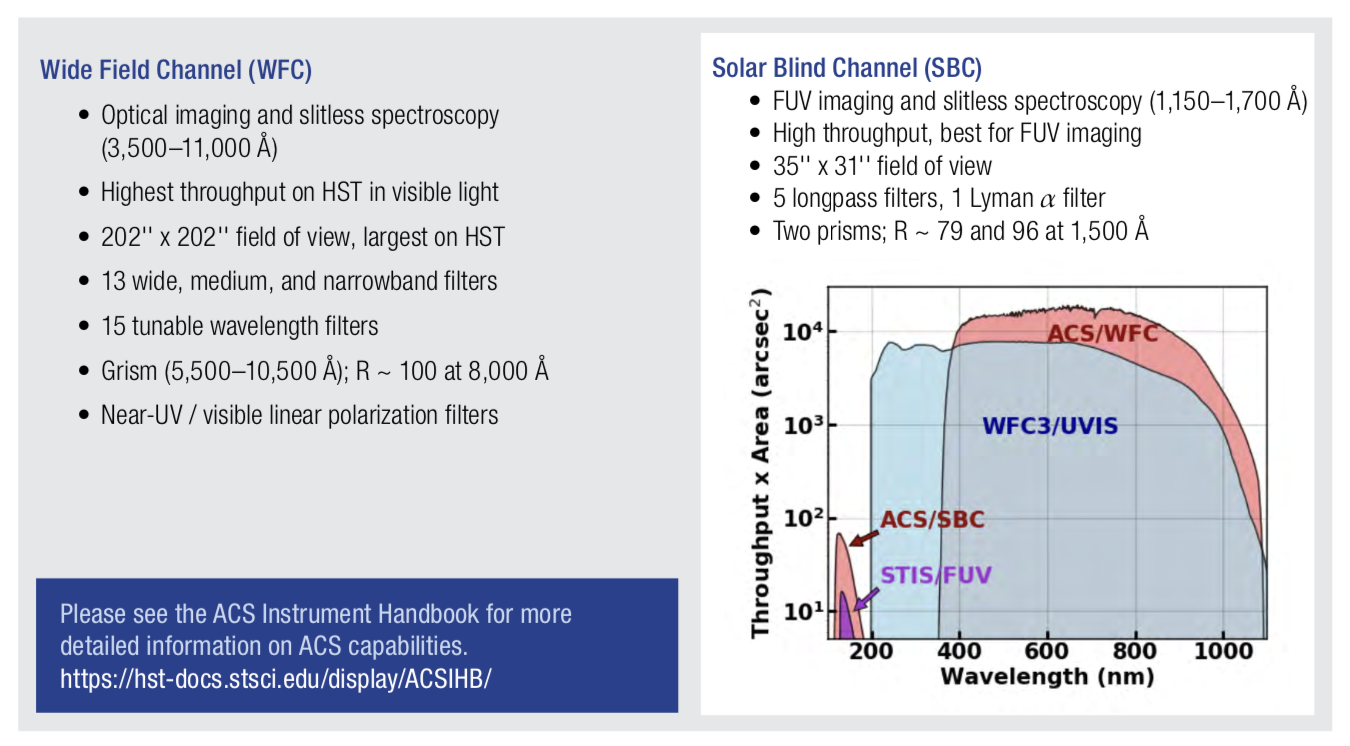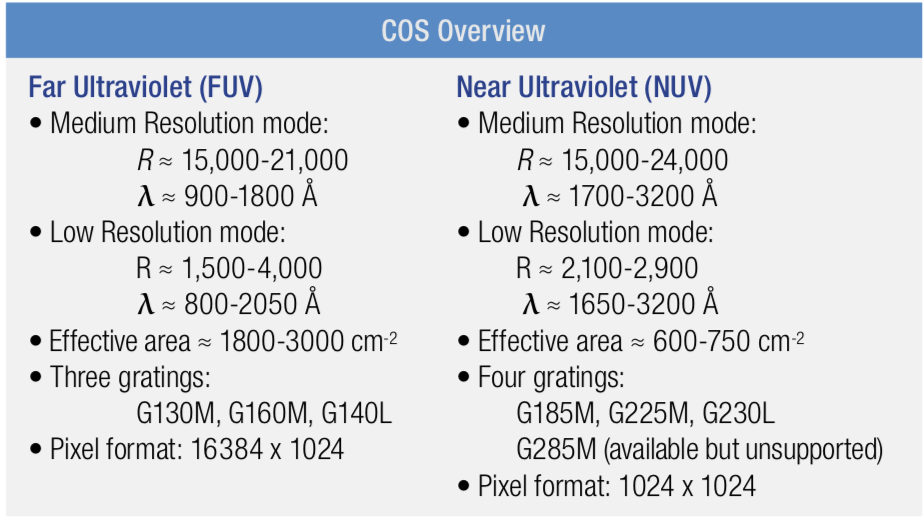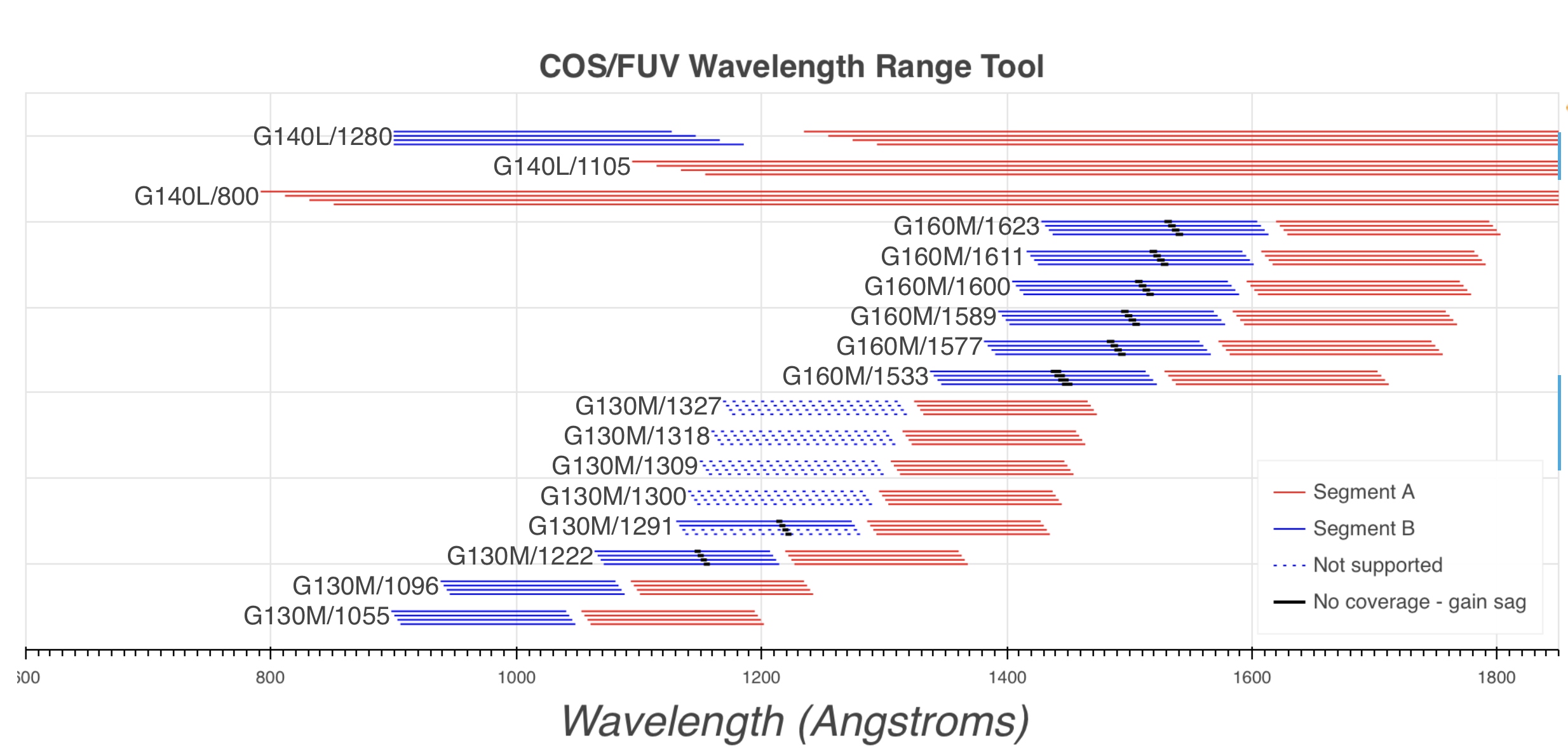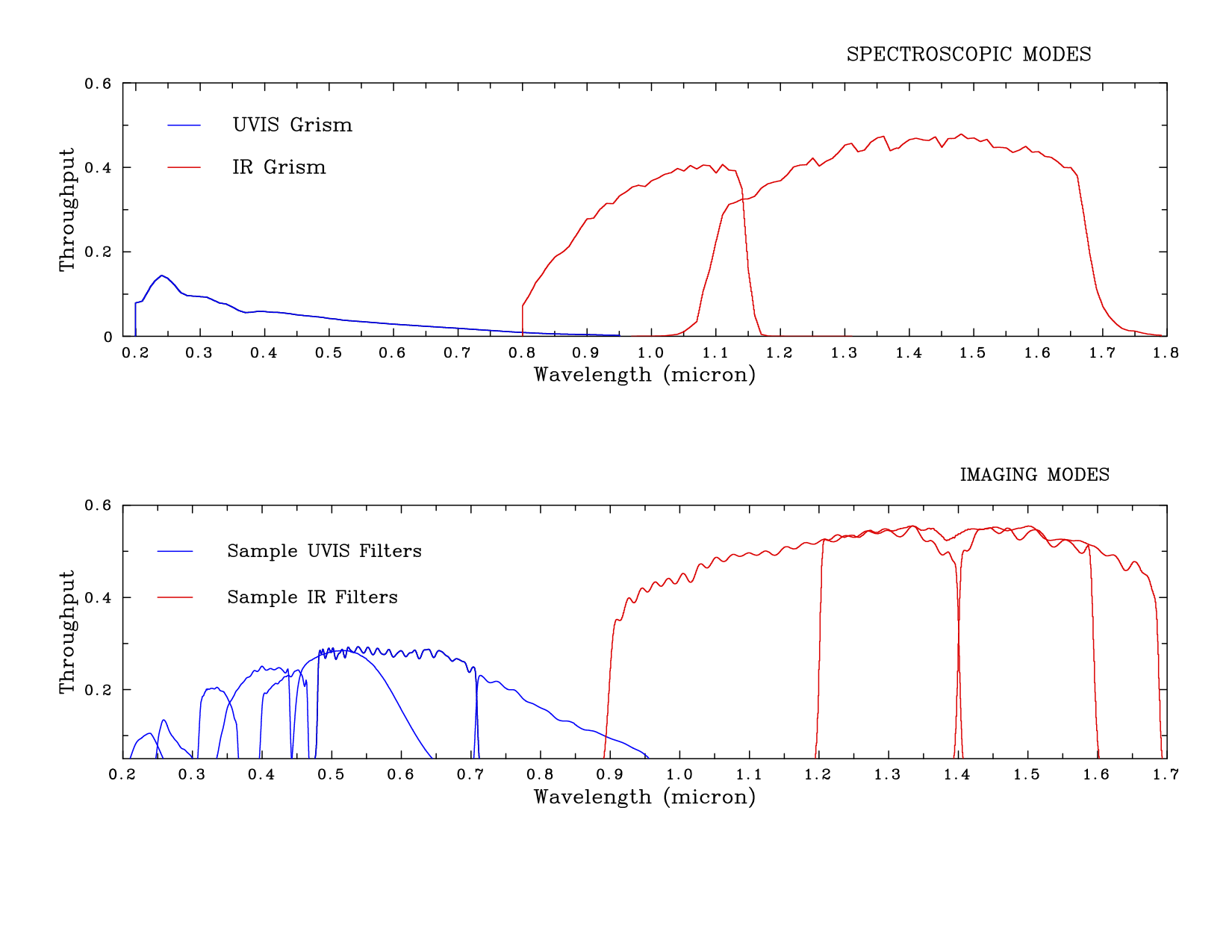Hubble and its Instruments
Hubble Space Telescope (HST)
HST will celebrate its 34th year of operations in 2024. It remains at the forefront of scientific discovery using its two cameras and two spectrographs to study objects in our Solar System out to the distant universe. The two spectrographs COS (2009) and STIS (1997) are the only front-line instruments for UV spectroscopy now and in the foreseeable future. The two cameras ACS (2002) and WFC3 (2009) have taken many hundreds of thousands of images and provide a unique, long baseline of observations over two decades.
Advanced Camera for Surveys (ACS)
ACS has two cameras: the Wide Field Camera (WFC) operating in the visible between 3500 to 11000 A, and the Solar Blind Channel (SBC) operating in the UV between 1150 and 1700 A.
Unique and Key Features:
ACS/WFC has the largest field of view and highest throughput in visible light of any HST instrument
The ACS/WFC grism provides well-calibrated, wide-field slitless spectroscopy of visible to near-IR light
ACS is the only active space-based, high spatial resolution polarimeter, providing synergy with JWST dust studies
The ACS/SBC is especially optimized for FUV imaging, but also supports slitless spectroscopy
Cosmic Origins Spectrograph (COS)
COS works exclusively in the UV and provides low to medium resolution spectroscopy from 800 to 3200 A.
Unique and Key Features:
- Has a fixed 2.5 arc second diameter aperture
- High sensitivity for observing faint sources
- Spectroscopy down to 800 A with the blue modes
- Spectrum position on FUV detector is moved periodically to a new lifetime position to mitigate gain sag
Space Telescope Imaging Spectrograph (STIS)
STIS is a highly versatile and configurable instrument with UV and visible imaging and low to high resolution spectroscopy with a variety of apertures.
Unique and Key Features:
- Has a coronagraphic mask and occulting bars
- Time-tag mode in the UV allows time-resolved observations
- Spatial scanning with the CCD allows high SNRs to be obtained while avoiding saturation
- High spatial resolution in the UV and visible
Wide-Field Camera 3 (WFC3)
WFC3 has two channels: UVIS operating in the UV and visible between 2000 to 10000 A, and the IR channel operating between 0.9 to 1.7 micron.
Unique and Key Features:
- High resolution imaging from 2000 A to 1.7 micron with a wide complement of filters
- Grism spectroscopy providing low resolution spectra at high spatial resolution in the UV/visible and IR
- Spatial scanning by slewing during an exposure to achieve high SNR photometry while avoiding saturation with direct imaging
- Grism scanning by slewing during an exposure to provide extremely high SNR spectra
Comparison of HST and JWST Instruments and Modes
See Guidelines for Proposals where JWST and HST Overlap in Capabilities at JDox.
More Information on Hubble Instruments
More information about Hubble and its instruments can be found in The Hubble Space Telescope Primer for Cycle 33.
Next: Proposal Types, Sizes and Science Areas




